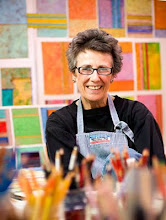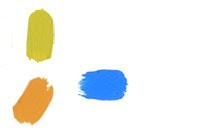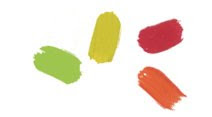Friday, March 5, 2010
About Abstraction
There are so many definitions and descriptions of abstract art that I’m going to take the liberty here of defining it according to my own bias. Some of the muddier versions have to do with abstracting from “nature” whatever that is, from the “real” world, (again, whatever that is). There is abstract expressionism, geometric abstraction, color-field, pop art, op art, hard edge painting, and non-representational and non-pictorial painting, and more.
A painting is a mirage. If it looks like a face, don’t be fooled. If it looks like a barn or a mountain stream, it’s not. It’s whatever media the artist used applied to a surface. What looks like a horse in a pasture is an illusion. It’s the artist’s version of what he sees or thinks he sees or invents.
I have no problem with landscape and portraiture and I’m quite partial to still lifes. I do take issue with those who denigrate art that its creator invents without any discernible reference to something outside the painting, (my definition of abstract painting). I am fond of repeating something that Vincent Van Gogh wrote in a letter to his brother Theo. He rose one morning wanting to paint a certain combination of yellow and blue. He trudged down a dusty road carting canvas and paints until he found the haystack and sky that suited his vision. The painting was not a landscape. It was the vessel that contained his great love for color in a world he left too soon.
It has been more than a hundred years since abstraction in its various forms appeared in our western culture, though it was part and parcel of many native arts and the arts of older civilizations long before that. It would seem unnecessary to explain or defend it in an age of computer generated art, conceptual art and some of the other contemporary forms of creative expression to be experienced now. Still, I find myself often maybe not so much defending as explaining.
On my last visit to New York I visited the New Museum for the first time. In a center space on the second floor, in the show called “Younger Than Jesus” there was a person napping in a bed. This volunteer was drugged and she slumbered untroubled by the close inspection from museum visitors. Was she real? Definitely. One foot was revealed by the tangled blanket. Looked like she could have used a bath. Was it art? I really didn’t care. It was fun and made the show more interesting.
We who call our work “abstract” or something along that line, are availing ourselves of whatever freedom our individual stock of boldness provides. I still struggle to secure the courage of my convictions. Here’s Georgia O’Keefe: "I have lived on a razor’s edge. So what if you fall off, I'd rather be doing something I really wanted to do. I'd walk it again."
The image above is Mini Triptych Nashira, acrylic & mixed media collage, 4.5 x 3" each, 2005. For information about any of the paintings seen on this site please email Joan.
Subscribe to:
Post Comments (Atom)














No comments:
Post a Comment